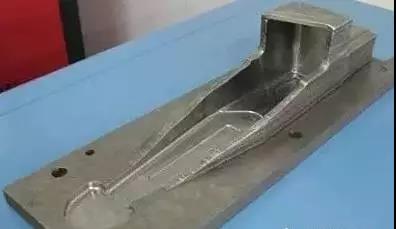What should I do if the dimension deviation in CNC machining?
First, the main reason for the deviation of workpiece processing size
When the workpiece is processed, it sends a control signal to the servo drive device through the digital operation of the CNC system, drives the servo motor to rotate, and then passes the mechanical feed device to the worktable, so that the relative motion between the workpiece and the tool occurs, and the position is detected at the same time The feedback device converts the actual relative movement between the workpiece and the tool into an electric signal and feeds it back to the CNC device. The CNC device compares the commanded indexed amount with the feedbacked actual indexed amount to process the workpiece that meets the design requirements of the processing program. .
However, in the actual machining of the CNC machining center, it often happens that the relative movement between the workpiece and the tool does not completely follow the command value, causing the size of the processed part to be inconsistent with the design. As a result, deviations in processing dimensions occur.

Usually the main causes of this type of failure are: the actual indexing value of the servo motor matches the commanded index value, but the actual relative movement of the workpiece and the tool does not meet the requirements; the actual indexed value of the servo motor does not match the commanded index value; There are several reasons for machine tool drive system return position deviation; external interference or pulse loss and mechanical failure.
Second, the resolution measures of workpiece processing size deviation
The CNC machining center is equipped with the electronic control device of CNC numerical control system and servo control system. Such systems generally have error compensation function, so using software compensation is the most direct and effective method to prevent and resolve machining size deviation. It mainly includes two measures such as tool compensation and interpolation algorithm.
1. Interpolation algorithm compensation
We know that the data value of CNC system of CNC machining center can only be the coordinate value of the start point and end point of a segment. . Through interpolation, the cutting trajectory of the tool during the entire machining process can be controlled in real time, and the impact on the workpiece machining size caused by unpredictable reasons is minimized to the greatest extent. In order to achieve high-precision machining of the workpiece.
2. Tool compensation
The tool compensation is the most important compensation method to prevent excessive machining dimension deviations of CNC machining center workpieces. However, to perform tool compensation, you should first determine the type of trajectory transfer between the front and back sections. There are four transfer forms for straight lines and arcs. Lines are connected to straight lines, lines are connected to arcs, arcs are connected to lines, and arcs are connected to arcs. According to the difference between the vector angle of the two segments of the program path and the direction of the tool compensation, the tool radius compensation of the block transition is divided into three types of transition modes: elongation, shortening and insertion.
